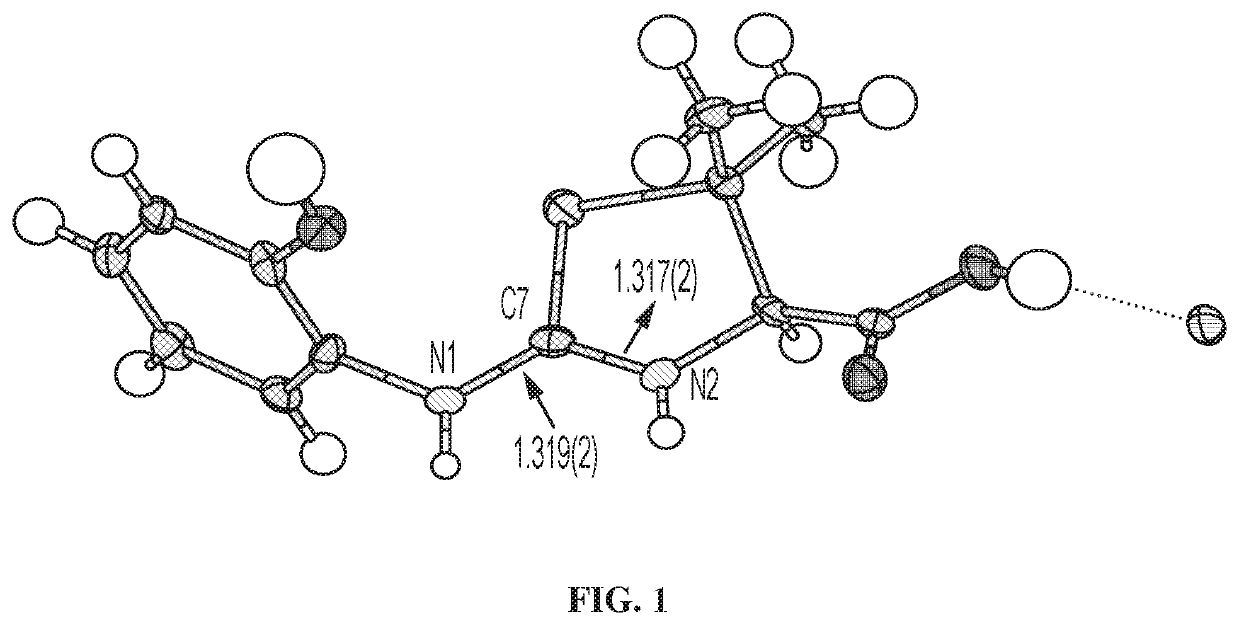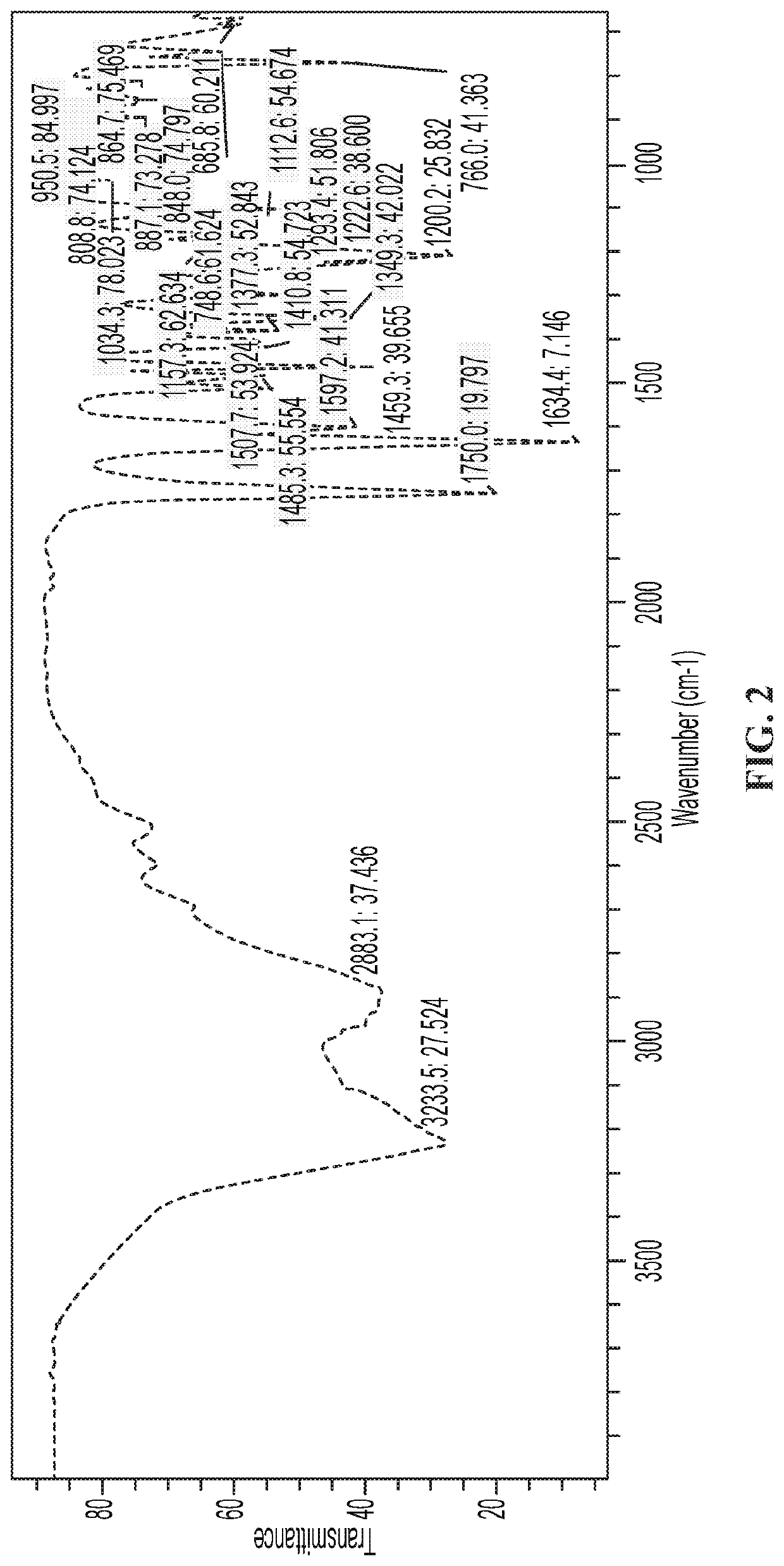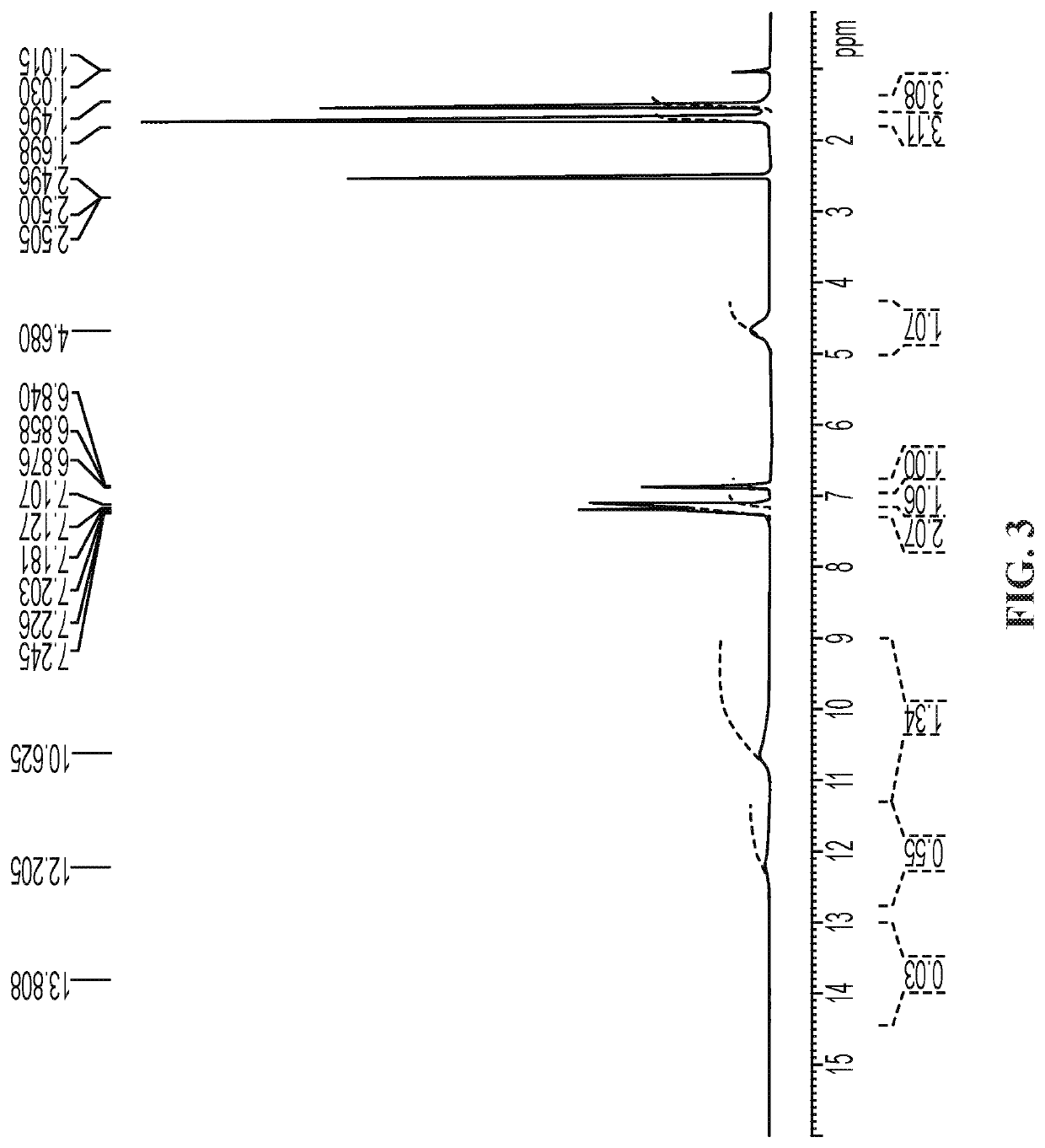Methods of treating pain with a thiazoline Anti-hyperalgesic
a technology of thiazoline and pain, applied in the direction of suppositories, drug compositions, metabolic disorders, etc., can solve the problems of hyperalgesia and/or allodynia, persistent or chronic pain, and patients who do not respond to existing therapeutics, and achieve the effects of improving pain relief, improving pain relief, and improving pain reli
- Summary
- Abstract
- Description
- Claims
- Application Information
AI Technical Summary
Benefits of technology
Problems solved by technology
Method used
Image
Examples
example 1
Properties of Compound 1
[0123]Compound 1, (R)-2-(2-hydroxyphenylamino)-5,5-dimethyl-4,5-dihydrothiazole-4-carboxylic acid mono-hydrochloride, has the structure of Formula I:
[0124]Compound 1 has the following pKa values: 2.29±0.02 (Acidic), 6.97±0.01 (Basic), and 10.24±0.03 (Acidic). Compound 1 is freely soluble in methanol and tert-butyl alcohol: water (1:1). Compound 1 is sparingly soluble in 2-propanol, ethanol, 10% water: isopropyl acetate, 10% water / tetrahydrofuran, and water. Compound 1 is less than sparingly soluble in n-heptane, toluene, acetone, tetrahydrofuran, ethyl acetate, isopropyl acetate, t-butyl methyl ether, and t-butyl alcohol.
[0125]Compound 1 has a Log D distribution coefficient at pH 7.2 of −0.07 (3 mL PBS Buffer: 1 mL Octanol) and −0.39 (2 mL PBS Buffer: 2 mL Octanol), where PBS is phosphate buffer solution.
[0126]FIG. 1 shows the X-ray crystal structure of Compound 1. The crystallographic parameters for the structure in FIG. 1 are listed in Table 1 below.
TABLE 1...
example 2
s of Compound 1
[0131]Polymorphic screening was performed using 15 organic / aqueous solvent systems, including: n-heptane, methanol, toluene, acetone, tetrahydrofuran, 2-propanol, ethanol, ethyl acetate, iso-propyl acetate, tert-butylmethyl ether, 10% water / 90% iso-propyl alcohol, 10% water / 90% tetrahydrofuran, tert-butyl alcohol, water, and 1:1 tert-butyl alcohol:water. Only one crystalline form was obtained (Form 1). Compound 1 is a non-solvated, crystalline, mono HCl salt. FIG. 5 shows the experimentally obtained XPRD spectrum of Compound 1 in the bottom trace, and the simulated XPRD spectrum in the top trace. The experimentally obtained XPRD spectrum of Compound 1 has the following peaks and associated intensities:
AngleIntensity(2-Theta)% 9.643.312.210.713.34.515.237.615.819.917.518.718.0100.019.214.819.466.620.08.321.57.221.712.621.931.023.047.624.525.225.118.625.26.926.421.226.74.127.15.427.26.427.78.128.113.228.46.728.84.129.215.129.415.129.76.030.112.330.512.231.113.831.426.63...
example 3
Manufacturing Compound 1
[0134]A method of making a compound of Formula I (Compound 1) is provided.
The method includes reacting an amine with a structure of
with
in the presence of a base and a first solvent to form an intermediate product of Formula II:
and
contacting the intermediate product with an acid and a second solvent to form Compound 1. In various embodiments, Compound 1 Zwitterion is isolated prior to being to being treated with acid.
[0135]The base can be any suitable base such as, without limitation, a primary, secondary, or tertiary amine, an alkyl lithium, a Grignard reagent, or an alkali metal hydroxide. In various embodiments, the base is selected from the group consisting of LiOH, NaOH, KOH, and combinations thereof. In various embodiments, the base is NaOH.
[0136]The first solvent can be any suitable solvent that is capable of dissolving the starting materials. The first solvent can be, in various embodiments, a polar protic solvent, a polar aprotic solvent, or a combina...
PUM
| Property | Measurement | Unit |
|---|---|---|
| concentration | aaaaa | aaaaa |
| time | aaaaa | aaaaa |
| w/w | aaaaa | aaaaa |
Abstract
Description
Claims
Application Information
 Login to View More
Login to View More - R&D
- Intellectual Property
- Life Sciences
- Materials
- Tech Scout
- Unparalleled Data Quality
- Higher Quality Content
- 60% Fewer Hallucinations
Browse by: Latest US Patents, China's latest patents, Technical Efficacy Thesaurus, Application Domain, Technology Topic, Popular Technical Reports.
© 2025 PatSnap. All rights reserved.Legal|Privacy policy|Modern Slavery Act Transparency Statement|Sitemap|About US| Contact US: help@patsnap.com



